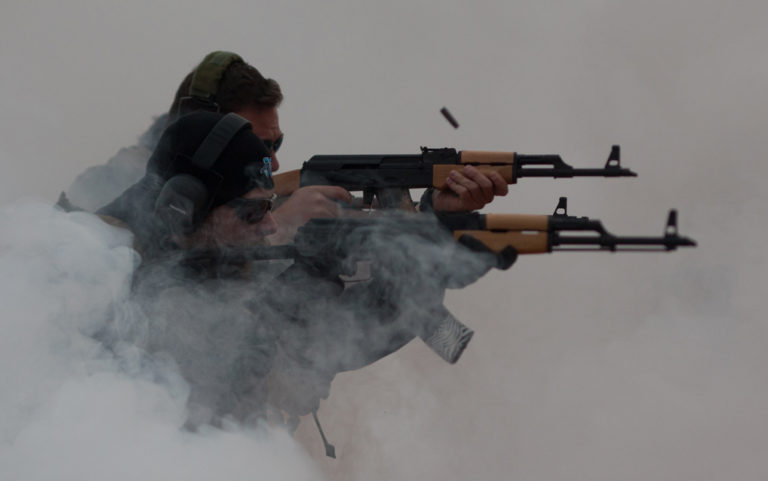
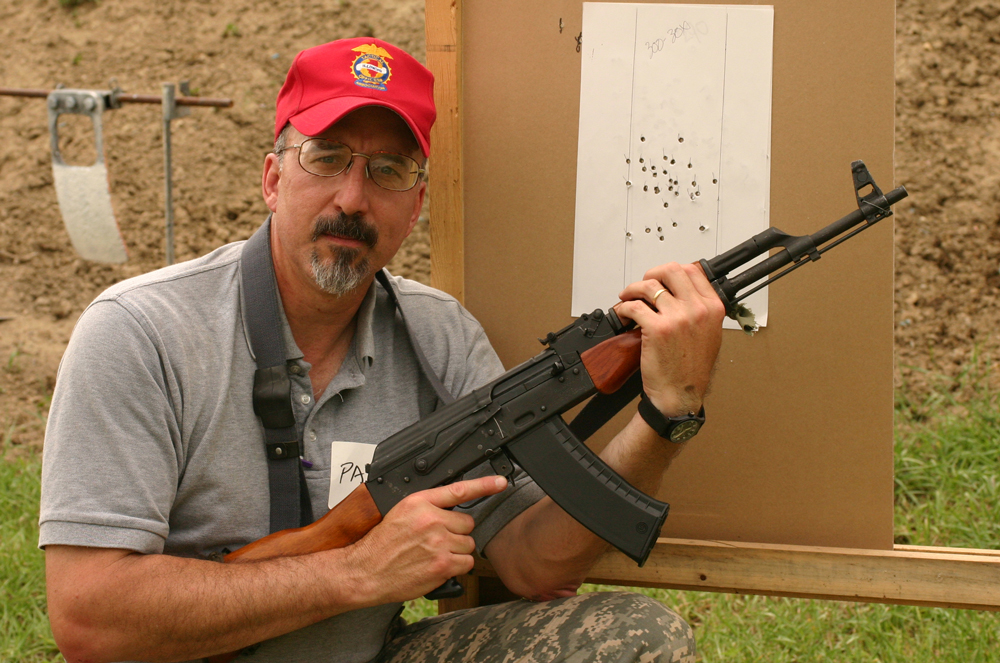
using a borrowed AK-74.
Over the years, the Kalashnikov has been pegged as an inaccurate firearm. But is it a fair assessment of the rifle? What can marksmen truly expect when it comes to AK accuracy?
Just how accurate can an AK be?
Before we can answer that question, we have to ask a few others. First, how accurate is the ammunition itself? And how do we go about measuring accuracy?
The common gunwriter method is to shoot a group, slap a scale across the widest spread holes, subtract the bullet diameter and voilà! There’s your group size and accuracy. But is this really a valid measurement method? Not exactly. The more informative method is to shoot more than one group, and more than the three-shot norm for hunters, and those who write for hunters. Hunters have reasonable (you’ll notice I did not say “good,” just reasonable) reasons for three-shot groups.
Once measured, this is translated from the ruler to a theoretical dispersion called “minute of angle,” or MOA. Angles are measured in degrees. Each degree is subdivided into minutes. A 1/60th of a degree is one minute of angle, and is pretty close to 1 inch at 100 yards. So, a “1 MOA rifle” will theoretically shoot a 1-inch group at 100 yards, a 2-inch group at 200 and so on.
A hunter is not going to take more than three, four shots at any given game animal. If you need more than that, it isn’t a hunt, it is a fight, or a culling operation, and you do not need to worry about minute-of-angle accuracy for the follow-up shots in a fight. Plus, most hunters take a “cold bore” shot. The rifle and ammunition are both at ambient temperature. They aren’t heated up from a long string of fire, so how accurate the rifle is or isn’t, when it is heated up, is immaterial.
A target shooter cares about accuracy from a hot barrel. If you are competing in High Power, you’ll be firing 10 shots in a minute, or 70 seconds. That barrel will get hot. If it changes point of impact or group size while it heats up, you’re pretty much non-competitive regardless of your skill level.
Military rifles are expected to work regardless of the climate, temperature, lack of cleaning, etc. And a hot barrel, well, when you’re in a fight, there’s no such thing as a timeout for barrel cooling. Keep that in mind when you read about the acceptable accuracy level of service rifles.
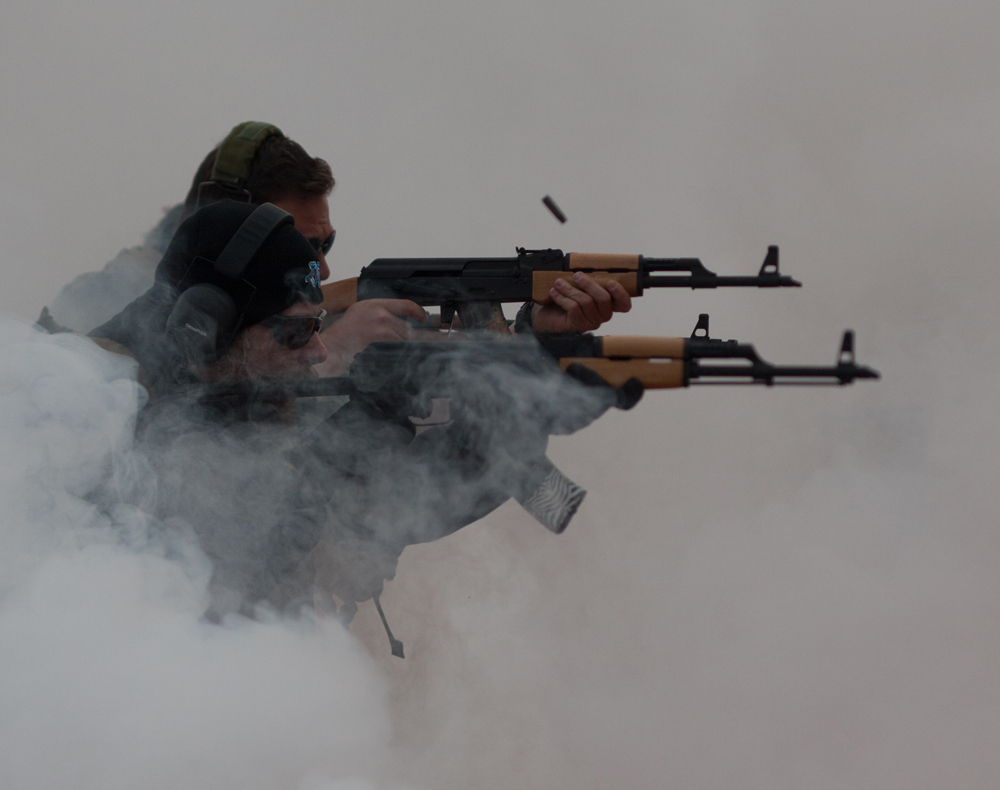
So, hunters, competitive shooters and the military all look at accuracy from different perspectives. Each perspective weighs the variables differently and measures results with a different yardstick.
The use-a-ruler method lacks a certain statistical precision. If the groups are wide side to side, or up and down, or are composed of a knot of holes with one flier always present, simply measuring the widest holes doesn’t tell you much. Then there is the tendency to improve our skills by culling. “Well, I slapped the trigger on one shot. That has to have been the one out of the group, so we’ll call it good with the rest.” Uh-huh. Good luck with that, Bucky. A “called flier” is just that. If you saw the front sight go high-left on the break, and the wide shot is indeed high and left, then you can call that shot out of the group on account of your trigger control. (Or lack thereof.) But if you have no idea where it went when you slapped the trigger, you can’t just toss the bad one. For all you know, that one you slapped went into the center of the group, and the flier was a clean trigger press.
But enough soapboxing.
The military uses several processes, one called the Mean Radius, the other Radial Standard Deviation. Basically, the process is simple, if not arduous. (You can read pages and pages of analysis on the mathematics involved; they are not hard to find.) The ammo to be tested is fired through a machine rest, a universal receiver into which is screwed a precision barrel. The location of each and every shot is measured. Then the center of the group is plotted or calculated. Next, each shot is measured for its individual distance from the calculated/measured group center. The average of the distances is the Mean Radius. The distances can be mathematically massaged by calculating the standard deviation for the distances of the holes in the group, where the standard deviation is a value of the dispersion of the plotted locations.
The more accurate the ammunition being tested, the lower the Mean Radius will be, and the lower the Standard Deviation. They do not necessarily tell you the same thing, and they will not be the same numerical values. Also, there is no “conversion factor” for MOA to MR or RSD. MOA is a simple measurement, and the other two are statistical calculations that also come with a percentage of confidence. As in “the Radial Standard Deviation of production load #123 is 1.59 inches, with a 95 percent confidence level.” When you read that (as an example) the “accepted accuracy” of a given lot of ammunition is within the 3 inches at 100 meters the Army feels is useful, they are not buying inaccurate ammunition. Or, when you read that “An average M16A2, with M855 ammunition, typically shoots 3.5 MOA” the Army is not buying crap. The military standard is measured with 10-shot groups. They do not “throw out fliers” because in a machine rest, there aren’t any. Every shot hits where it hits because that is what the ammunition does, not because the quarter-ton universal rest, barrel and stand, flinched. When they test rifles, they use known samples that are relevant examples of the type to be tested. They are fired from fixed rests, with no human interference. Only after all that does a person get involved, and the results, with good record keeping, can be plotted over time and be very predictable.
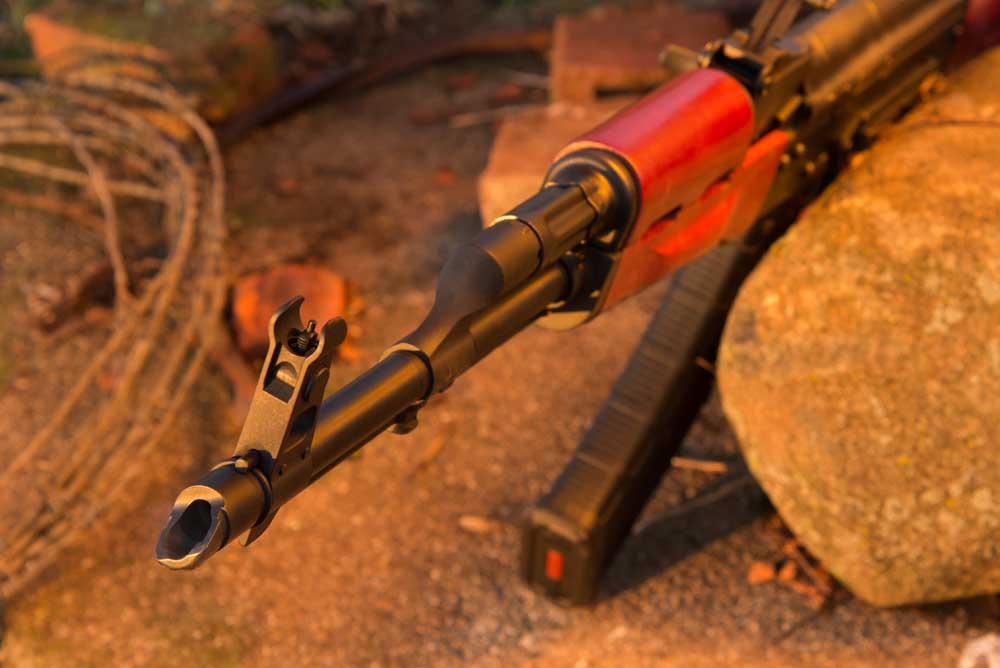
And remember, the Army rightly expects a rifle to go bang every time, and to deliver its bullet pretty close to the intended spot on the target. In any climate, situation, or location.
Think of it this way. A rifle that “only” shoots a 3.5 MOA group will deliver a bullet within a 10.5-inch circle at 300 yards. Hold a ruler up, across your chest. Then tell me that “3.5 MOA isn’t accurate enough.”
But, how do we tell accuracy in an AK? First, we need something more accurate than an AK, to test the ammo and parse out its contribution to the system. That’s where CZ comes in. Lacking a machine rest or a universal receiver, a bolt-action rifle with a good scope on top, fired from a solid bench and a rifle rest is the best way to determine ammunition accuracy. The lists of bolt-action rifles are not exactly replete with models chambered in 7.62×39. There was the Ruger Hawkeye Compact, from 2009-2012; the Mini Mauser Mark X, imported by Interarms — the Mini has been available off and on in .223 since the late 1980s, but the 7.62×39 version was only sporadically available; and the Savage 10FCM Scout, which was available for a while, and Savage rifles have very good barrels. But we are really left with one choice.
The only bolt-action factory rifle chambered in 7.62×39 (with a bonus: a detachable magazine) that I’m aware of is the CZ 527 carbine, one of which I happen to possess. Based on a shortened Brno action, it has a single-feed, single-stack five-round magazine, and since it was designed and made in Europe, they have a clue about 7.62×39. The chamber is dimensioned to CIP specs, and the bore is made for .311-inch diameter bullets. Being a euro rifle, it does not have the receiver drilled and tapped for scope mounts, instead using a dovetail system, thus CZ-specific rings and bases. Since CZ USA also has the rings, that isn’t an issue.
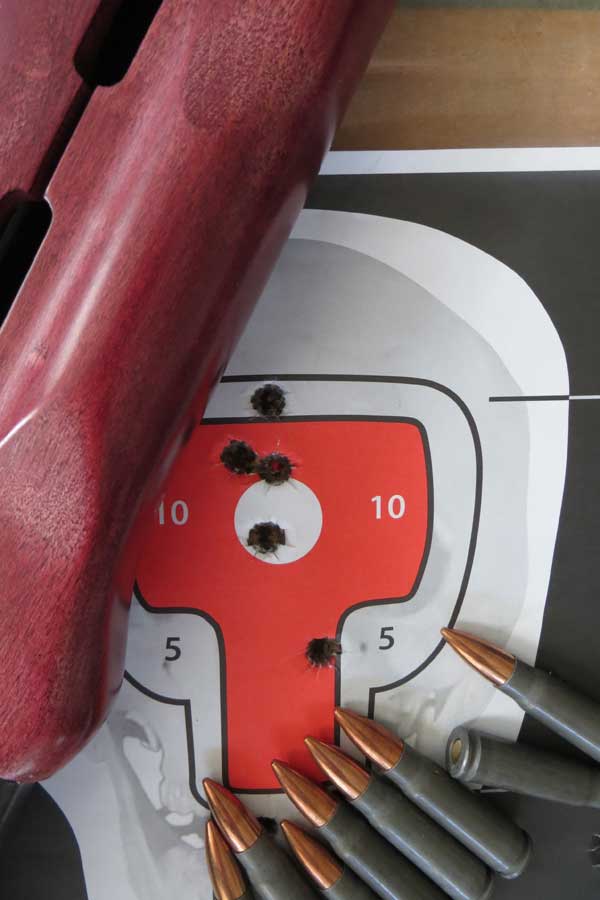
This does, however, pose something of a problem. If we have a barrel made for .311-inch bullets, and we use ammunition that is loaded with .308-inch bullets, accuracy may not be all it could be. But then, we’re using the ammo elsewhere in rifles (AKs) that have bores dimensioned for .311-inch bullets, so the accuracy results should translate well. The twist rate of the CZ 527 is listed as 1:9, which is a bit faster than the spec rate for the AK, with a twist of 1:9.45. A small thing when punching paper from the bench.
The Testing Process
I took the rifle to the range and shot groups with it. I fired four, five-shot groups with each type of ammo available, at 100 yards, and measured all the hits.
The results were as expected. A good batch of ammo, from the bench, with a scope, from a bolt-action rifle, shot to about 2 MOA. The less-premium ammunition ran in the 3-4 MOA range. Which isn’t too bad, really. Oh, I know, as I pointed out earlier, that we Americans are all superb shots. And it is our birthright as Americans to own (and expect every rifle to be) a sub-MOA rifle. Yeah, but we aren’t, and they aren’t. And a lightweight, handy little carbine like the 527, especially with no extra effort put into bedding it, isn’t going to be sub-MOA.
But as a cross-check for AK accuracy, it is a solid performer.
So, when you mount a scope on your AK, and you find you are still “only” shooting 3 MOA from the bench, keep this in mind — you’re doing good, running pretty much at the limits of the system.
This article is from the Gun Digest Book of the AK & SKS, Volume 2.

Next Step: Get your FREE Printable Target Pack
Enhance your shooting precision with our 62 MOA Targets, perfect for rifles and handguns. Crafted in collaboration with Storm Tactical for accuracy and versatility.
Subscribe to the Gun Digest email newsletter and get your downloadable target pack sent straight to your inbox. Stay updated with the latest firearms info in the industry.

![Best Concealed Carry Guns In 2025 [Field Tested] Wilson Combat EDC X9S 1](https://gundigest.com/wp-content/uploads/Wilson-Combat-EDC-X9S-1-324x160.jpg)


![Best 9mm Carbine: Affordable PCCs [Tested] Ruger Carbine Shooting](https://gundigest.com/wp-content/uploads/Ruger-Carbine-Shooting-100x70.jpg)
![Best AR-15: Top Options Available Today [Field Tested] Harrington and Richardson PSA XM177E2 feature](https://gundigest.com/wp-content/uploads/Harrington-and-Richardson-PSA-XM177E2-feature-100x70.jpg)

It seems to me the biggest issue with AK accuracy is inconsistent barrel production, or wear in older guns. So, wouldn’t the first step, if you aren’t satisfied with your accuracy, be to slug the barrel? Then select the proper projectile based on that.